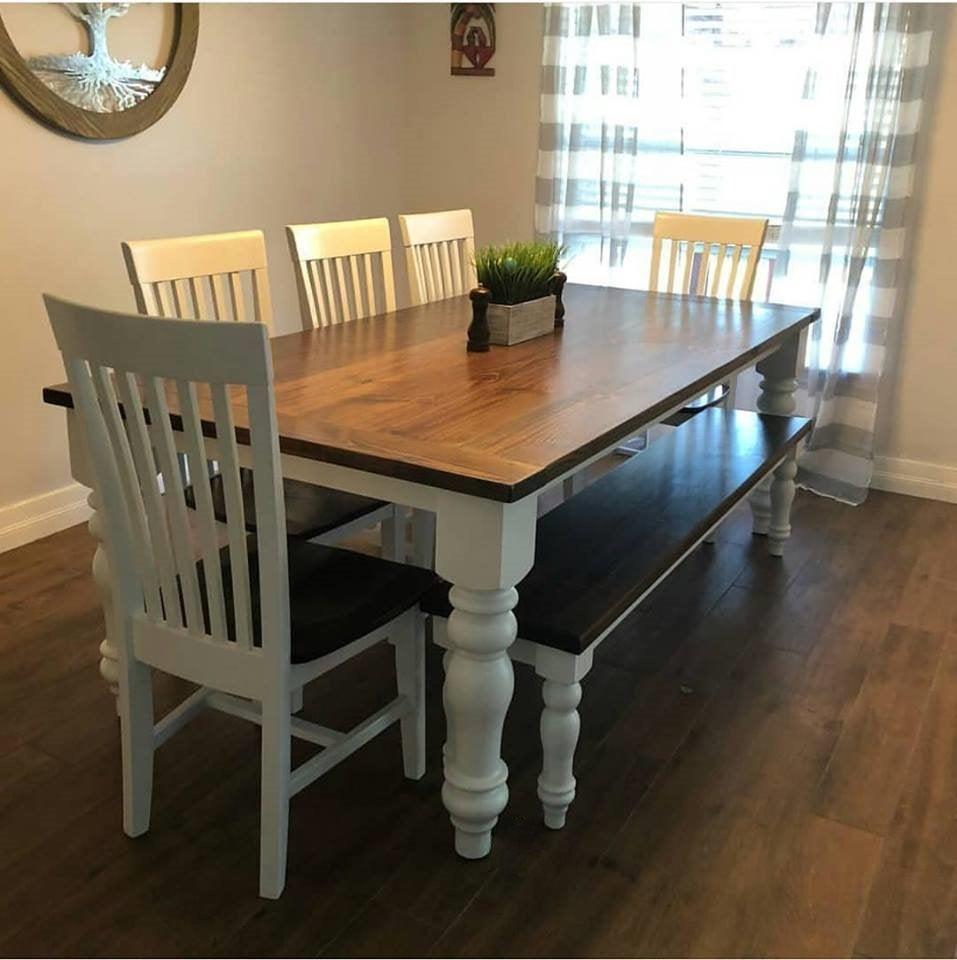The Ultimate Guide to Choose Long Lasting Dining Room Table Legs
The Ultimate Guide to Choose Long Lasting Dining Room Table Legs
Blog Article
An In-depth Look at Table Leg Styles: Finding the Ideal Match
Selecting the ideal dining table leg design is essential for both visual appeal and functional functionality. Conventional four legs supply ageless beauty and security, while the pedestal base gives enhanced legroom and a modern-day appearance. For those with bigger tables, trestle legs ensure tough support, whereas hairpin legs introduce a mid-century modern-day vibe with their minimalist style. The x-shaped legs mix modern design with enhanced stability. Each of these alternatives brings distinct advantages, making the option a lot more than simply a matter of preference. Check out even more to discover which style perfectly matches your eating room and way of living.
Conventional 4 Legs
Among the various kinds of eating table leg designs, the standard four-leg layout stays a classic option for many households. 4 legs provide well balanced support, making sure the table remains secure and capable of birthing substantial weight (dining room table legs).
From an aesthetic viewpoint, the typical four-leg design can be easily adapted to numerous interior styles. Whether crafted from wood, steel, or a mix of products, these legs can be intricately sculpted, smooth and minimalistic, or anything in between. Their adaptability allows them to enhance both rustic and modern setups flawlessly.
Furthermore, the straightforward framework of the four-leg layout assists in convenience of movement and placement within an area. Unlike more complex bases, this style lessens blockages, supplying adequate legroom for restaurants. In summary, the standard four-leg dining table leg design marries enduring elegance with sensible functionality, making it an astute choice for those looking for both form and feature in their eating furniture.
Stand Base
Usually commemorated for its sophisticated and space-efficient design, the pedestal base is a notable choice to the typical four-leg configuration in dining table leg styles. Without edge legs, diners are paid for better flexibility of movement, making it a perfect option for round and oval tables that advertise more intimate and comprehensive events.
In addition, the pedestal base's central support can take care of substantial weight, allowing for making use of much heavier tabletops, such as marble or thick wood. This strength coupled with its visual flexibility makes the stand base a prominent option in both traditional and contemporary indoor setups. It can perfectly integrate with various design styles, from traditional sophistication to minimal modernity. Additionally, the main column itself uses a canvas for detailed designs and creative expressions, including an aspect of visual rate of interest beneath the table. In summary, the stand base integrates performance with design, making it an improved and useful choice for varied dining environments.
Trestle Legs
Trestle legs supply a durable and classic structure for eating tables, identified by their horizontal cross-bracing and sturdy assistance beam of lights. Originating from middle ages times, this design has actually progressed yet retained its necessary framework, imp source making it a seasonal favorite in both standard and contemporary setups. The main trestle beam of light, commonly supported by two or even more upright messages, uses phenomenal stability, permitting larger table lengths without the requirement for additional legs.
A substantial advantage of trestle leg tables is the adequate legroom they provide. Unlike tables with four edge legs, the absence of obstructions at the table's edges supplies unobstructed space for chairs and diners, improving convenience and ease of access. This makes trestle tables optimal for fitting bigger celebrations, whether in an eating room or a banquet hall.
From rustic farmhouse to sleek modern styles, trestle legs can be customized to suit individual preferences. Their enduring charm and functional benefits make trestle legs a compelling selection for those looking for both design and practicality in their dining table.
Hairpin Legs

The appeal of hairpin legs exists in their simpleness and flexibility - dining room table legs. Offered in a variety of materials, including steel and brass, they can be ended up in many shades to enhance various interior styles. Whether coupled with a rustic wooden tabletop or a modern glass surface area, hairpin legs easily blend capability with a touch of vintage appeal
Toughness is another noteworthy feature of hairpin legs. Regardless of their delicate look, these legs are engineered to birth significant weight, guaranteeing the table stays secure and secure. In addition, they are relatively easy to mount, making them a popular choice for do it yourself lovers and expert furnishings manufacturers alike.
X-Shaped Legs

Created from products such as steel, timber, or a mix of both, X-shaped legs can be customized to match numerous layout choices. Steel legs typically provide a smooth and commercial feeling, suitable for loft-style apartments and contemporary visit this web-site eating spaces. On the various other hand, wood X-shaped legs offer a warmer, more rustic allure, appropriate for farmhouse or diverse insides. The adaptability in products permits property owners to customize their eating tables look what i found to better fit their overall design plan.
Additionally, the engineering behind X-shaped legs makes sure also weight distribution, reducing the danger of tottering and improving toughness. This makes them specifically well-suited for larger dining tables that need additional assistance. Essentially, X-shaped legs mix useful design with contemporary aesthetic appeals, making them a classic option for varied eating settings.
Conclusion
A thorough understanding of eating table leg designs exposes the distinctive qualities and advantages of each style. Trestle legs make sure robust assistance for larger tables, and hairpin legs introduce a mid-century modern-day visual.
Report this page